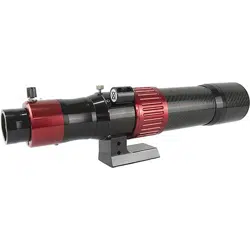Loading ...
Loading ...
Loading ...

Exposure time:
Imaging solar vs. nighttime astrophotography is very different. Dark sky
imaging requires long exposure times to capture enough light. Solar
imaging offers ample light, so exposures should be very short. Plus,
fluctuations in seeing dictate that short <1/10 second frame rates will be
better, as seeing cells move quickly to distort the image and can come
and go during a long exposure.
• Short exposure webcam imagers are better than long exposure
CCD cameras when imaging the sun.
• Because the sun has a range of brightnesses, automatic
exposure doesn’t work well. A software interface that allows the
user to control the exposure settings manually is very important.
Exposures for prominences taken through a DayStar with a webcam
style camera might be about 1/15 – 1/100
th
of a second. Exposures for
surface detail would be even shorter exposure with about 1/300 to
1/500
th
of a second.
Bit depth:
Solar activity encompasses a wide dynamic brightness range from bright
solar flares to faint eruptive or floating prominences quite a distance from
the solar limb. In order to capture all these features, we recommend the
use of 12 bit or 16 bit cameras. Normal 8 bit cameras can be used, but
will typically only be able to image either the surface or prominences,
necessitating multiple bracketed exposures and subsequent
recombination in a computer. 12 bit or 16 bit cameras enable capturing
these features in the same exposure, simplifying the image processing.
Focal reducers:
Because of the long effective focal length at the output of the Scout, the
image scale will be quite large and small (1/2” or below) image sensors
will only capture a fraction of the whole solar disk in one frame. Large
pixel sizes (9 microns and above) will enable a larger field of view.
Alternatively, a focal reducer can be employed
between the Scout and the camera. Simple 1.25”
screw in focal reducers can be attached to the
camera nosepiece to allow a wider field of view with
small (1/2”, 1/3”, ¼”) sensor cameras. More
distance between the focal reducer and camera
surface will result in more focal reduction and larger field of view.
Loading ...
Loading ...
Loading ...
